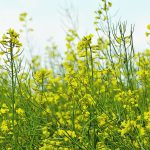Increasing the value of the crop’s various parts, rather than focusing just on seed, could be key to the sector’s prosperity
Glacier FarmMedia – It’s not enough for the canola industry to focus on seed. The next step of growth, according to one seed marketing expert, is about capturing more value for each of the plant’s parts. ”When we think about the whole value chain, we think about the farmer, we think about the crush partner, […] Read moreTag Archives Canola Week

Sask. canola group makes crop disease its major focus
SaskCanola amalgamated with the Saskatchewan Flax Development Commission this year to become SaskOilseeds
Free disease testing for farmers, field training days for agronomists and farmer-conducted on-farm research trials were the focuses of SaskOilseeds this past year. Research manager Doug Heath outlined the organization’s 2024 activity at Canola Week, held Dec. 3-5 in Saskatoon and online. ”We work on behalf of canola and flax farmers to fund crop research, […] Read more
Carbon intensity is ‘game changer’
SASKATOON — Bob Larocque had one takeaway from his presentation at Canola Week 2023. “Remember carbon intensity because that’s the game changer,” said the president of the Canadian Fuels Association. It is a factor that will help determine the value of canola when large volumes of the crop are being consumed by the renewable diesel […] Read more

Company seeks stinkweed acres in the U.S.
Also known as pennycress, the winter oilseed crop could make its way north to Canada once hardy varieties are developed
SASKATOON — Kevin Cook wants farmers to grow more weeds. He is the vice-president of breeding at CoverCress Inc., a company that has successfully converted stinkweed, also known as pennycress, into a viable winter oilseed cover crop. The initial target market for the crop will be the central United States but it could eventually make […] Read more





